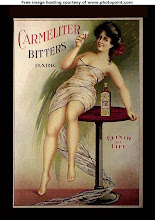The First Steeping
My Father always referenced it as "The Worst experiment ever implemented by the U.S. Government". Prohibition brought with it an energy of loss. Literally, a great drought among fantastic beverage institutions, breweries and distilleries of the period ensued, igniting a visceral lapse of inventiveness and creativeness amongst their workforces. From those who operated the tanks and filled the barrels and created recipes with raw fermenting product to the barkeeps and tipplers who defined the art of the drink in the utmost elegant and prestigious bars and taverns; a great lull fell about the land of well crafted alcoholic products and their renegade flavors.
It wasn't until the fifth of December 1933 that proprietors of "cocktail" crafting institutions realized that such men who had been masters of this domain years before were few and far between at this point. Not only had any existing recipes been aptly retooled and reconstructed to conform with available product, most no longer remained. The base alcohol and added flavorings including bitters simply were no longer being produced.
The earliest variations of beverages including alcohol, bitters and a sweetener (usually sugar) really presented American imbibers a formative stage to the modern cocktail. Early observers and reference materials bring to light that bitters were a primary ingredient in the makeup and composition of what defined a cocktail. As most pre-prohibion bitters contained alcohol, all domestic brands were illegal to make and most brands were illegal to import. A complex product that have as mysterious a history with their initial production and use as they have with their additions to cocktails. Bitters revive, they cut through, clarify and offer balance.



